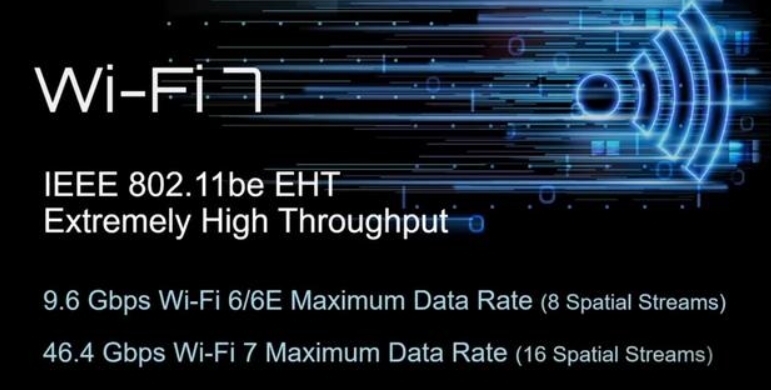Qualcomm IPQ8074 and IPQ5322-From WiFi 6 to WiFi 7: An In-Depth Comparison

As wireless technology continues to advance, the shift from WiFi 6 (802.11ax) to WiFi 7 (802.11be) marks a significant milestone in networking performance, efficiency, and capabilities. Qualcomm's IPQ8074 and IPQ5322 are two flagship chipsets representing these two standards. Understanding their differences is essential for developers, businesses, and technology enthusiasts looking to deploy next-generation networking solutions. In this article, we will explore the specifications, performance, key features, and ideal use cases for each chipset to provide a comprehensive understanding of their strengths and applications.
1. Overview of WiFi 6 and WiFi 7 Technologies
Before diving into the specifics of the IPQ8074 and IPQ5322, let's review the key differences between WiFi 6 and WiFi 7:
WiFi 6 (802.11ax): Focuses on enhancing efficiency, capacity, and performance in dense environments by introducing technologies like OFDMA, MU-MIMO, and 1024-QAM.
WiFi 7 (802.11be): Builds upon WiFi 6 with higher speeds, reduced latency, and improved efficiency by incorporating 4096-QAM, 320 MHz channel bandwidth, and Multi-Link Operation (MLO).
These improvements make WiFi 7 suitable for demanding applications such as 8K streaming, AR/VR, cloud gaming, and ultra-low-latency communications.
2. Specification Breakdown: IPQ8074 vs. IPQ5322
3. Key Feature Analysis
WiFi Standard and Frequency Bands
IPQ8074: Supports WiFi 6 with dual-band operation on 2.4GHz and 5GHz, making it suitable for current enterprise and consumer-grade devices.
IPQ5322: Supports WiFi 7 with tri-band operation on 2.4GHz, 5GHz, and 6GHz. The additional 6GHz band offers more bandwidth, less interference, and greater capacity for modern networks.
MU-MIMO (Multi-User, Multiple-Input, Multiple-Output)
IPQ8074: 8x8 MU-MIMO allows up to 8 simultaneous streams, ideal for environments with many connected devices.
IPQ5322: 4x4 MU-MIMO is optimized for WiFi 7’s improved efficiency, allowing faster and more reliable connections for high-bandwidth applications.
Modulation and Data Rates
IPQ8074: Utilizes 1024-QAM, achieving data rates up to 4.8 Gbps.
IPQ5322: Employs advanced 4096-QAM, doubling the modulation efficiency and supporting data rates up to 10 Gbps. This is particularly beneficial for high-definition streaming, cloud-based applications, and gaming.
Channel Bandwidth
IPQ8074: Supports channel bandwidths up to 160 MHz.
IPQ5322: Doubles the channel bandwidth to 320 MHz, allowing for significantly higher throughput and reduced latency.
Multi-Link Operation (MLO)
IPQ5322: Introduces Multi-Link Operation (MLO), which allows devices to simultaneously connect across multiple bands (2.4GHz, 5GHz, and 6GHz). This reduces latency, improves reliability, and enhances overall network efficiency. The IPQ8074 does not support MLO.
4. Processing Power and Ethernet Connectivity
IPQ8074: Equipped with a quad-core ARM Cortex-A53 processor running at 2.2 GHz and supports two 10-Gigabit Ethernet ports, making it suitable for enterprise-level routing and data-intensive tasks.
IPQ5322: Features a dual-core ARM Cortex-A53 processor at 1.8 GHz and supports two 2.5-Gigabit Ethernet ports, aligning with the needs of modern high-speed home and SMB networks.
5. Applications and Use Cases
IPQ8074 Applications
Enterprise-Grade Routers: Ideal for office networks requiring high capacity and reliability.
Mesh WiFi Systems: Supports robust backhaul and seamless connectivity in dense environments.
High-Performance Home Routers: Suitable for homes with multiple devices and bandwidth-intensive activities.
WiFi Extenders and Access Points: Provides strong coverage and connectivity for larger spaces.
IPQ5322 Applications
Next-Generation WiFi 7 Routers: Perfect for delivering ultra-fast speeds, low latency, and high efficiency in smart homes and offices.
Mesh Networks with Multi-Link Operation: Ensures reliable, high-speed connections with reduced interference.
AR/VR and Cloud Gaming: Meets the low-latency requirements for immersive experiences.
8K Streaming and Content Creation: Supports high-bandwidth applications and real-time content delivery.
6. Cost and Future-Proofing
IPQ8074: A cost-effective solution for current WiFi 6 needs, widely adopted in enterprise and consumer markets.
IPQ5322: A higher-cost investment offering future-proof performance for the upcoming WiFi 7 era.
Conclusion
In summary, IPQ8074 excels in current WiFi 6 applications with robust performance, while the IPQ5322 offers cutting-edge WiFi 7 features that deliver faster speeds, lower latency, and greater efficiency. The choice between these two depends on your immediate needs and long-term vision for networking infrastructure.










评论